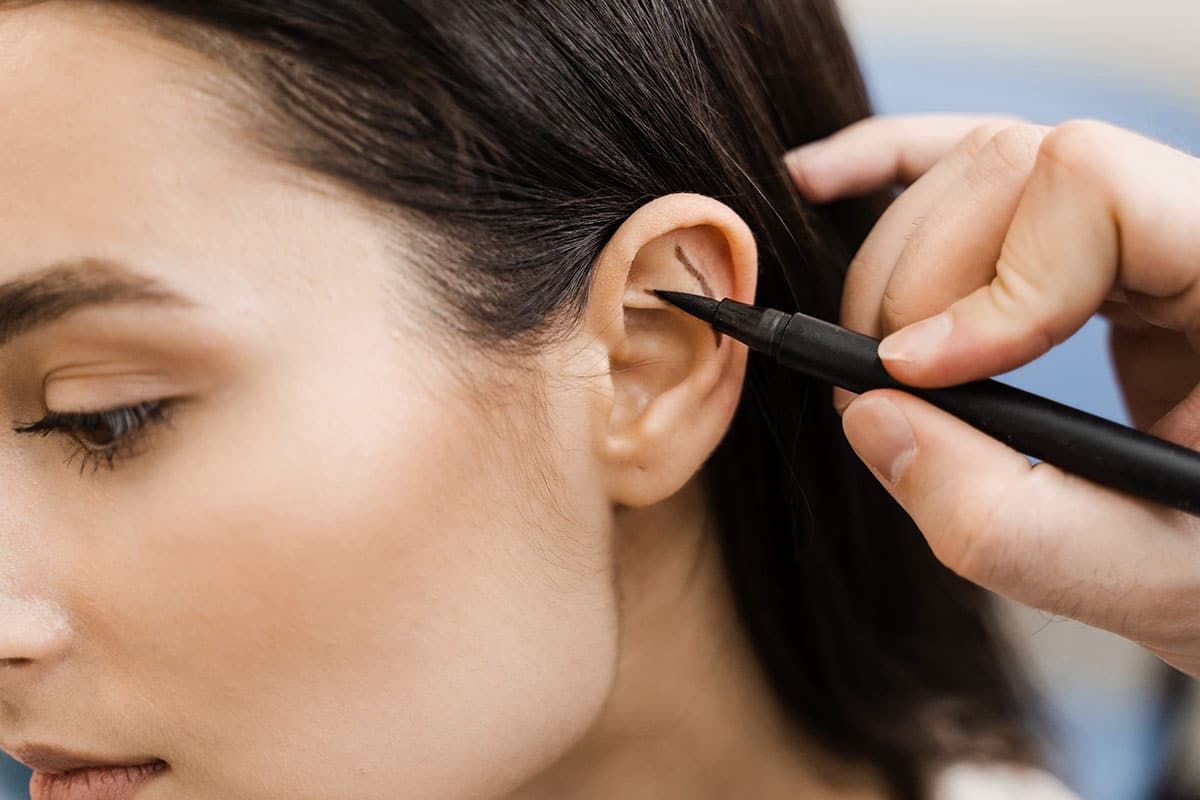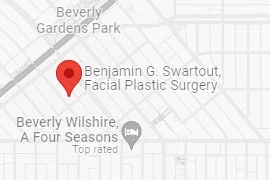Have you ever looked in the mirror and wished your ears looked more proportional or less prominent? If so, you’re not alone. Many people seek ear surgery—also known as otoplasty—to improve the shape or position of their ears, helping them feel more confident in their appearance.
Thanks to advances in cosmetic surgery, there are now multiple ways to achieve natural-looking results. Among them is incisionless otoplasty, a minimally invasive option that promises change without the typical tell-tale signs of surgery. But how does it compare to traditional otoplasty? Read on to find out.

Does Otoplasty Leave Scars?
In principle, any procedure involving surgical incisions will leave behind some degree of scarring. Otoplasty is no different—traditional methods often involve making incisions behind the ear, which can result in fine, discreet scars. However, as with other aesthetic procedures like mini facelifts, there is a less invasive alternative. Incisionless otoplasty requires no cuts; instead, it uses a needle and specialized sutures to reshape the cartilage. This means no visible scars—just a few tiny puncture marks that heal quickly and cleanly. In the sections below, we’ll explore how each approach differs in technique, recovery, cost, and risks.
Otoplasty Techniques
Otoplasty techniques vary significantly depending on whether the procedure is traditional or incisionless. Understanding these differences can help patients make more informed decisions based on their goals, anatomy, and lifestyle. From the way the ear cartilage is accessed and reshaped to the type of anesthesia used and the time it takes, each technique offers unique benefits and limitations. Let’s take a closer look at how both the incisionless and traditional otoplasty procedures are performed.
The Incisionless Otoplasty Procedure
Unlike traditional ear pinning techniques, incisionless otoplasty involves no cutting of the skin or cartilage. Instead, the surgeon uses a fine needle to create tiny punctures behind the ear. Through these puncture sites, permanent sutures are threaded and strategically placed to reshape the cartilage and bring the ears closer to the head. This minimally invasive technique preserves the skin and avoids visible scars. The procedure is usually performed under local anesthesia and typically takes less than an hour to complete. Most patients experience minimal discomfort and can return to their normal routine almost immediately.
The Traditional Otoplasty Procedure
Traditional otoplasty involves making a small incision behind the ear, typically along the natural fold where the ear meets the head. Through this incision, the surgeon accesses and reshapes the ear cartilage, either by folding, suturing, or removing portions of it to achieve the desired contour. This method allows for precise, long-lasting structural changes. The traditional surgery is usually performed under local anesthesia with sedation or general anesthesia, depending on patient preference and complexity. The procedure often takes about one to two hours, and a small, hidden scar remains behind the ear post-surgery.
Otoplasty Surgery Cost
The cost of otoplasty—whether traditional or incisionless—can vary depending on several shared factors. These typically include the geographic location of the practice, the level of experience and training of the surgeon, the type of anesthesia used, and facility fees. However, the type of otoplasty you choose may also bring additional variables into play, such as the complexity of the case or the need for specialized materials or techniques. In the following sections, we’ll break down the cost considerations specific to each approach.
Incisionless Otoplasty Cost
Incisionless otoplasty is generally less expensive than its traditional counterpart, primarily because it is quicker to perform and usually doesn’t require general anesthesia. The average price can range from $2,000 to $5,000, depending on the complexity of the case and the surgeon’s expertise. Since there are no incisions or stitches to remove, follow-up visits may also be fewer, potentially lowering associated costs. However, as a more specialized and relatively newer technique, some high-demand surgeons may charge a premium for this minimally invasive approach.
Traditional Otoplasty Cost
Traditional otoplasty is typically more costly than the incisionless approach due to the complexity of the procedure, longer surgical time, and possible use of general anesthesia. On average, otoplasty patients can expect to pay between $3,500 and $7,500. This variation depends on factors such as the surgeon’s credentials, geographic location, and the need for facility or anesthesia fees. Additional post-operative care and follow-up visits may also influence the total cost. For patients needing more extensive reshaping or structural correction, the traditional method may be the more appropriate, though more expensive option.

Secure Your Safe Procedure Experience with Dr. Swartout
Join our satisfied clients who’ve experienced safe, effective treatments.
Otoplasty Recovery and Results
Recovery plays a major role in the overall experience and satisfaction with any facial plastic surgery. Whether you choose incisionless or traditional otoplasty, it’s helpful to know what to expect during the healing process and how soon you’ll begin to see results. While both techniques aim for natural-looking improvements, the timelines and post-operative requirements differ. Below, we’ll walk through what recovery looks like for each option and how long it typically takes for the final results to fully take shape.
Incisionless Otoplasty Recovery
One of the key advantages of incisionless otoplasty is the remarkably short recovery time. Because there are no incisions, there’s minimal swelling, bruising, or discomfort. Most patients can resume daily activities within a day or two, and any residual tenderness typically resolves within a week. There may be some mild pressure or tightness as the ears adjust to their new position, but it’s usually well tolerated. Results can be seen almost immediately and continue to refine over the following weeks as the tissue settles around the new shape.
Traditional Otoplasty Recovery
Recovery from traditional otoplasty is a bit more involved due to the presence of surgical incisions and the reshaping of cartilage. Patients typically wear a protective headband or dressing for the first few days to support healing and maintain the new ear position. Swelling and bruising are common and may take up to two weeks to fully subside. Discomfort is usually manageable with over-the-counter or prescribed medication. Most people can return to work or school within a week, but strenuous activities should be avoided for several weeks. Final results usually become fully apparent after a few months.
Potential Risks of Complications
As with any surgical procedure, both incisionless and traditional otoplasty carry some risk. While complications are relatively rare when performed by an experienced surgeon, it’s important to understand what could go wrong and how risks may differ between techniques. Factors such as the use of sutures, the presence or absence of incisions, and individual healing responses all play a role. Below, we break down the specific risks associated with each approach to help patients make well-informed decisions.
Incisionless Otoplasty Risks
While generally very safe, incisionless otoplasty is not entirely risk-free. The most common concerns include suture visibility, suture breakage, or minor asymmetry if the sutures shift over time. There’s also a small chance of infection or inflammation at the puncture sites, though these are rare and typically resolve with basic care. Because the skin is not cut, risks like bleeding and scarring are significantly reduced. Choosing a highly skilled surgeon helps ensure proper technique and optimal placement of the sutures, which minimizes the risk of complications.
Traditional Otoplasty Risks
Traditional otoplasty carries a slightly broader range of risks due to its more invasive nature. Potential complications include bleeding, infection, visible scarring, and prolonged swelling or bruising. There is also a chance of asymmetry or unsatisfactory cosmetic results, which may require revision surgery. In rare cases, patients may experience changes in skin sensation around the ear or issues with wound healing. These risks are significantly reduced when the procedure is performed by a board-certified surgeon with extensive experience in ear surgery and facial anatomy.
Schedule a Consultation with a Cosmetic Ear Surgeon
When considering any cosmetic ear surgery, it’s essential to choose a specialist with experience and precision. Whether you’re interested in a scar-free solution or a more comprehensive correction, the expertise of your otoplasty surgeon will directly impact the outcome of your results and your satisfaction with the process.
Dr. Benjamin Swartout is a Harvard-educated, board-certified facial plastic surgeon who brings unmatched knowledge to every procedure he performs. While he is world-renowned for his work in nasal and reconstructive surgery, his deep understanding of facial aesthetics and surgical innovation extends to all areas of the face, including the ears. Call us at 310-275-0704 or visit our contact page to schedule an otoplasty consultation.

